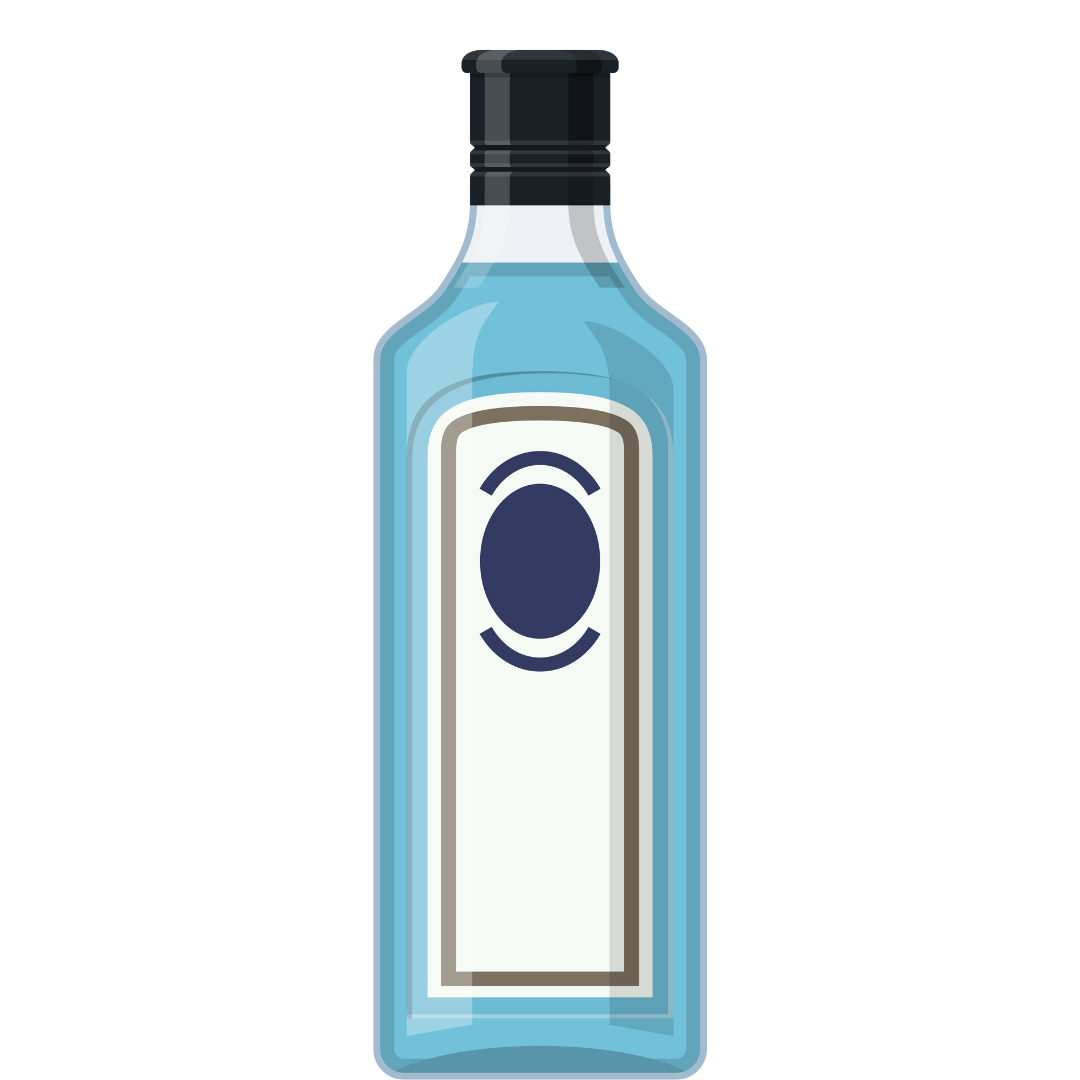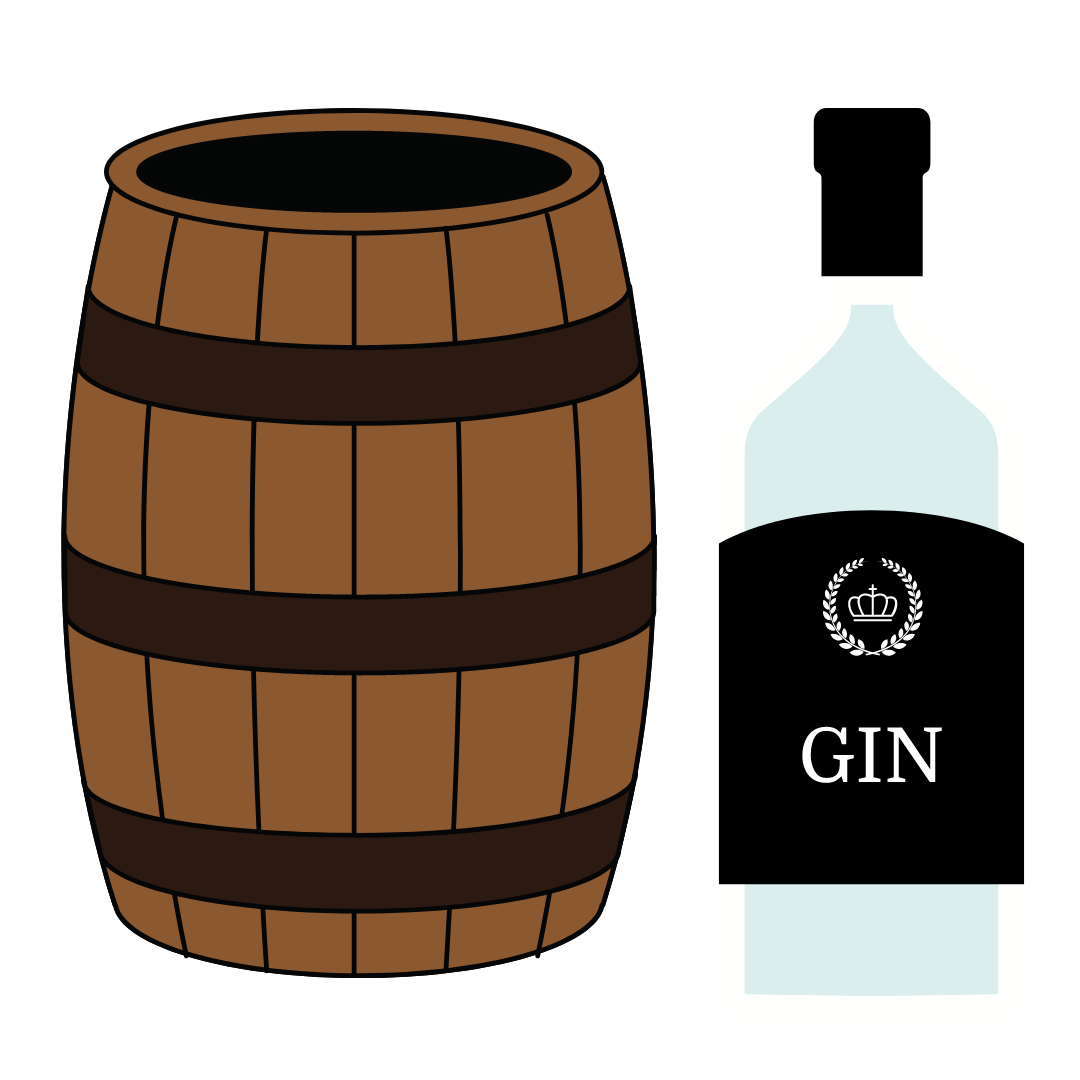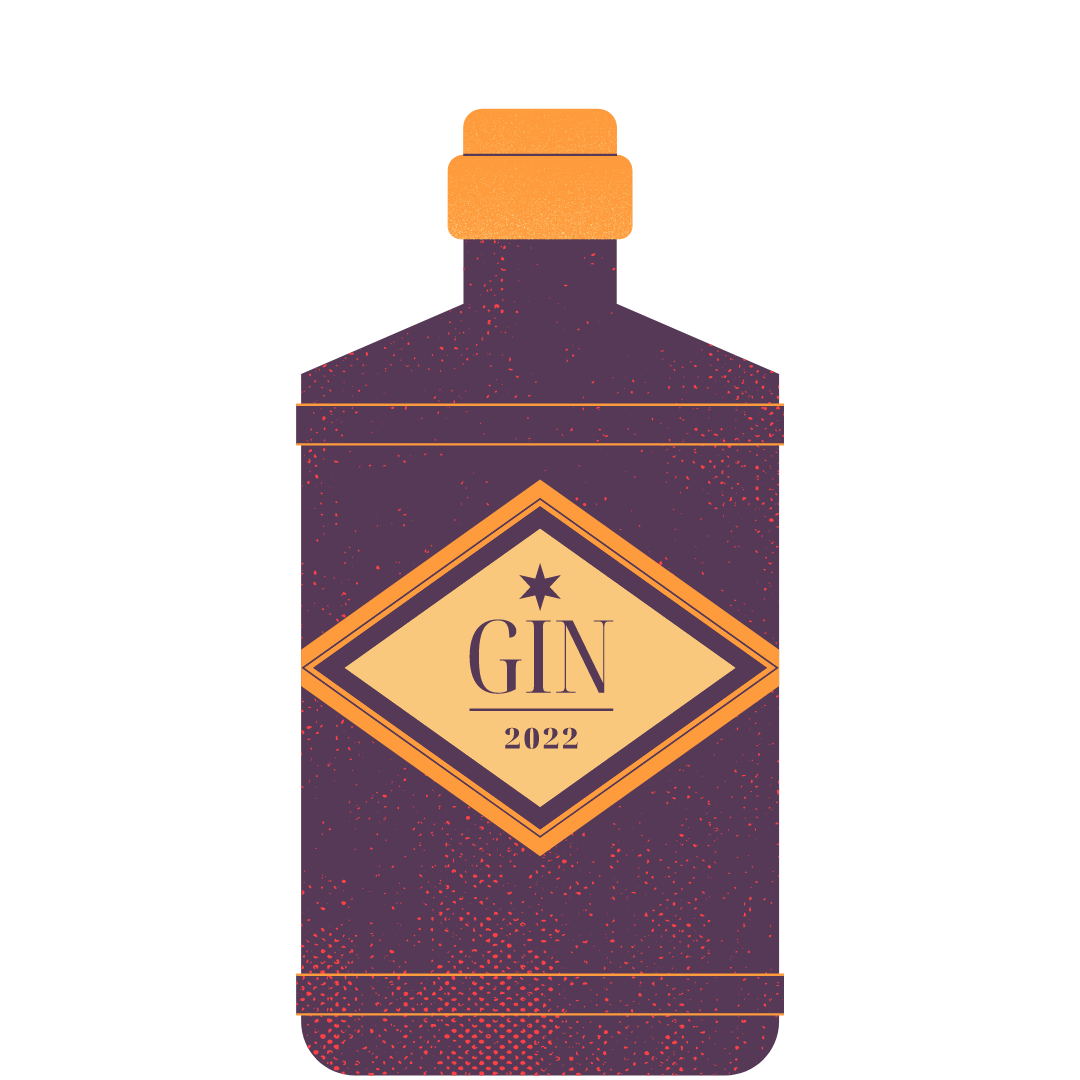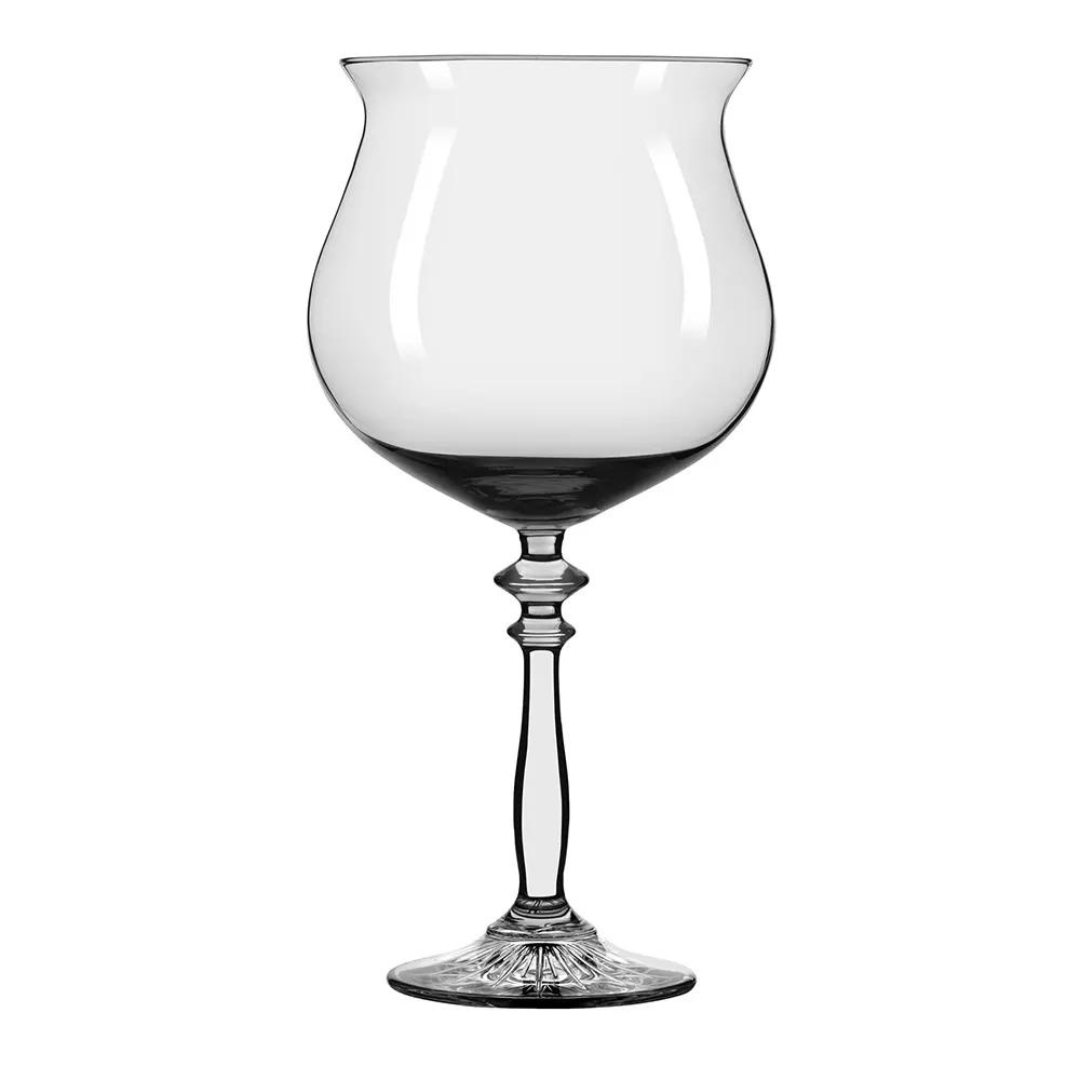Aug 12th 2022 - Monica Cunanan
The Types of Gins You Need To Try
If you are a gin enthusiast, you have probably tasted various types of gin. They each have their own unique flavors and can be mixed into classic simple cocktails like martinis and negronis.
9 Different Types of Gin:
 London Dry Gin: 37.5% ABV and has an assertive juniper flavor
London Dry Gin: 37.5% ABV and has an assertive juniper flavor- Dry Gin: 37.5% ABV and has an assertive juniper flavor with other additive flavorings
- Plymouth Gin: 41.2% ABV with drier taste than a typical London Dry gin and has strong citrus flavors
- Sloe Gin: 25% ABV and add a new and fruited flavor to your classic gin and tonic.
- New Western Dry Gin: 37.5% This new type of gin got named New Western Dry.
- Old Tom Gin: 96% ABV richer than a London Dry gin and works well in mixed drinks
- Reserve Gin: 45% ABV they add some new flavor and variety to the gin category.
- Compound/ Bathtub Gin: 57% ABV has flavors of juniper infused taste
- Genever: 50% ABV and is sweet and fragrant.
See More: How To Taste Gin
London Dry Gin
London Dry Gin is one of the most famous types of Gin. Contrary to what the name suggests, however, a London Dry Gin doesn't necessarily need to be made in London. Here are the specific features of London Dry Gin
- ABV: It has to be at least 37.5% ABV
- Production: To produce it, natural botanicals underwent continuous distillation in the pot still, all at the same time
- It is clear and its solvent is water
- There are no sugar or flavors additives
- Taste: Most still have an assertive juniper flavor but some producers may tweak it.
Try out this Libbey Gin & Tonic Glass for a better Gin Experience!
Dry Gin
 Dry Gin is quite similar to a London Dry gin.
Dry Gin is quite similar to a London Dry gin.
- ABV: It has to be at least 37.5% alcohol ABV
- Production: Natural substances and popular botanicals are added at any stage of the production process. The appearance and flavor of a Dry Gin are altered by adding natural food colorings and flavors.
- Taste: Most still have an assertive juniper flavor from alcohol from juniper berries but some producers may tweak it.
Plymouth Gin

Plymouth Gin is actually a type of Gin and there is only one distillery producing this. When mentioned in the Savoy Cocktail Book, Plymouth Gin became very popular. There were 23 cocktails in this book using it altogether
- ABV: 41.2%
- Production:
- Blackfriars Distillery is the only distillery producing this.
- One of these botanical extracts is called Orris root.
- Taste: Plymouth gin has a drier taste than typical London Dry gins. It also has strong citrus notes, and you get a bit of spice from the blend of seven herbs and spices. They create an amazing earthy note, which makes them ideal ingredients for Martinis and Negronis.
Sloe Gin
 ABV: 25% ABV for Sloe Gin (Percent alcohol differs from the usual 37.5%)
ABV: 25% ABV for Sloe Gin (Percent alcohol differs from the usual 37.5%)- Production: It is created by mixing sloes (the fruit) and sugar into gin. Over time, the sloe gin will develop and get its distinctive dark red color.
- Taste: The sloes add a new and fruited flavor to your classic gin and tonic.
New Western Dry Gin/ New Wave
New Western Dry is one of the newer kinds of gin. During the 2000s, several gin crafters, especially American craft gin distillers, tried to push the boundaries by creating gins without juniper berries.
This new gin type got named New Western Dry. They're sometimes called "New Wave" too.
Here are some examples of traditional gins that aren't so traditional:
- Hendrick's gin
- G'vine & Nordé's gin
- fruity and flowery Aviation gin.
For a a better gin tasting experience, you can try out this Libbey Speakeasy Glass.
Old Tom Gin

Originally, Old Tom Gin was a sweetened gin. As time went by, the gin became more popular and was often mixed with other ingredients. Some people would add sugar, others would use honey, but some would even mix it with licorice.
- ABV: 96% ABV
- Production:
- It's made from high-quality botanicals.
- There are no set legal requirements for this type of business, so it’s difficult to pin down exactly what they are.
- You can use licorice root (root beer) as an indicator of whether it has been distilled properly. There are no flavors are added afterward.
- Taste: It’s richer than a London Dry gin and works well in mixed drinks. It’s perfect for pre-Prohibition classic cocktails and, naturally, for Tom Collins.
Reserve Gin

Gins that aren't cask-aged gins are a newer trend.
- ABV: 45% ABV
- Production:
- Gin has similar properties to other types of alcohols; for example, it absorbs the notes of wooden barrels and also changes slightly in color.
- Some people think this type of Gin is appealing, but others think it's just an attempt by distilleries to raise Gin prices.
- Taste: They're not for everyone but they add some new flavor and variety to the gin category.
Compound / Bathtub Gin

The least popular type in this group.
- ABV: 57% ABV
- Production:
- The compound gin doesn't get distilled. Instead, the botanical extracts are added to neutral alcohol individually and then mixed together.
- One of the main drawbacks of this type is that it may change in flavor and color over time. If the botanical ingredients aren't filtered properly, the tiny bits of botanical flavor are left behind after filtering. These tiny bits of botanicals remain unchanged over time and develop flavors and colors.
- Taste: Most compound gins have flavor of juniper berries infused after the distillation process,
With this method, you can easily create your own gin at home. It isn't super easy, and the result won't be top quality. But it is fun to do!
Genever

Genever is the traditional type of gin made in the Netherlands and Belgium. Dating back to the 16th century and its creation was a lot closer to a gin than a whiskey.
- ABV: 50% ABV (Alcohol by Volume)
- Production: Made from a malt grain mash similar to whiskey, genever is usually aged for one to three years.
- There are two types of Genever - oude (old) and Jonge (young).
- Taste:
- Bottles of Old Geneve are the original styles of gin and is relatively sweet and fragrant. Young genever is drier and lighter than old genever.
- Genever performs best when used in very rich cocktails with sweet vermouth or in a classic gin cocktail.
So Which Type of Gin is the Best?
It's totally up to you. Depending on how you want to serve your gin, with what you mix your gin, and what your personal tastes are, it may be best served chilled or on the rocks.
Each type and even each individual Gin has its own unique taste and flavor profile. Of course, there are some factors to take into consideration when selecting your best fit.
A good old genever usually works well in a gin old fashion. A Plymouth gin works well in martinis and negronis.
Getting creative with your Modern Cocktails?
Ready to showcase your newfound appreciation for Gin? Impress your friends and family when serving your delicious cocktails. Culinary Depot is your one-stop shop for essentials for your home bar or business. Contact us now or visit our online store for your bartending essentials!



